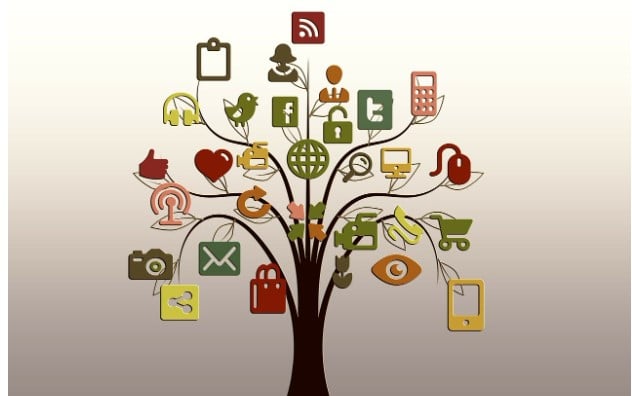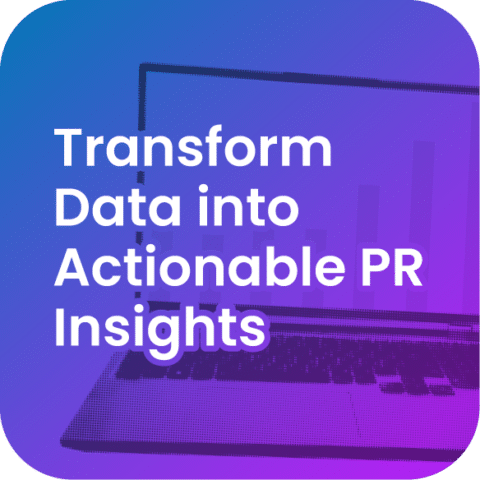Public relations campaigns have developed beyond traditional press releases and media outreach. That being said, content is every bit as important as ever, and visual storytelling is now becoming a powerful tool to engage audiences, and drive campaign success.
Storytelling is an excellent way to engage your audience and when you include photos and videos in it, it has an even larger impact on how people focus on your content.
In this article, we’ll dive deeper into learning more about the role that visual storytelling plays in PR campaigns.
Visual storytelling’s immediate impact

As of the latest statistics, the average attention span of people has dropped from 12 to just 8 seconds in the past 25 years. That’s even more important than it has ever been.
Visuals, whether infographics, images on social media, or video content, communicate any long-form information or complex messages instantly and allow users to process them more easily.
Especially when you are a PR professional, this is important since you want to make sure people are entirely focused on what you are saying. Therefore, using visuals in your PR campaigns will make it more possible for your message to be understood and remembered for a longer period of time.
In fact, recent research claims that visuals are processed 60,000 times faster than text.
Improved brand recognition
Continuously showcasing visuals will improve brand recognition and long-term trust. For instance, if you have a well-designed logo that communicates your brand’s values and personality, people are more likely to remember it.
Especially when it comes to PR campaigns, it’s important to be consistent with displaying your visuals. They should convey what your brand is about and not only the short-term goals of the campaign.
Easily processes long-form or complex texts
A huge advantage of visual storytelling is its ability to simplify complex information. Infographics are a great example since they turn long-form or complex texts into engaging graphics. Let’s face it, when you read long forms of text, it might not be such an exciting thing to deal with compared to when you can understand everything by simply looking at an image.
Visual storytelling can simplify data presentations, make information much more accessible and engaging, and increase the campaign’s reach and effectiveness.
360-degree product photography

In digital marketing, when you learn more about 360 product photography you’ll see how it’s transforming how brands tell their stories online.
Having 360-degree images of your product creates a more interactive and immersive experience, increasing engagement and trust when elevating your brand’s authenticity. It plays an important role in visual storytelling by allowing customers to explore a product from all angles, making them feel much more connected to the brand.
Interactive visuals can capture people’s attention for a longer time and increase the likelihood of a conversion. This means that users will spend more time interacting with a product.
Seeing a product from every perspective makes sure that the customer can see its quality, which helps to reduce return rates.
Brand consistency and authenticity
Without a doubt, visual storytelling is an excellent way to improve brand consistency and authenticity. You can ensure brand consistency by using a cohesive style across all platforms (colors, typography, imagery) that defines your brand’s identity and makes it instantly recognizable.
Story-driven visuals create an emotional connection with your audience, making them feel more human and relatable. Customers will resonate with authentic stories rather than trying to get promoted like they mostly do in their daily endeavors.
We already mentioned that people process images 60,000 times faster than text. This means that a compelling visual story will grab people’s attention, improve retention, and encourage sharing.
Above all, visual storytelling also impacts your credibility. You can include behind-the-scenes images that show transparency and build trust with your audience over time.
Visuals are much more engaging
Naturally speaking, human beings are visual creatures and our brains will naturally process imagery much faster than texts. When our minds process something faster, they’ll automatically engage with it much easier.
You can take a look at all social media channels with images or videos. They all receive much higher click-through rates, and feedback, and get much more shares than text-only posts.
Successful PR campaigns are the ones that interact with their audience and, in this case, visual storytelling helps make this possible and improves engagement.
Improves social media reach

People process images and videos faster than words on a screen. Plus, the algorithms are known to favor engagement, meaning a post with more likes and comments will be shown to more people.
So it’s no surprise that visuals are 40 times more likely to get shared on social media channels compared to text.
Not to mention the fact that most platforms are designed for images and videos over text-based posts. When your goal is reaching a broader audience and expanding your product’s visibility, choosing compelling and emotion-driven visuals will prove to be more effective than anything else you share.
3 Good examples of successful PR campaigns that use visual storytelling
To make everything more understandable, we’ll give you a few examples of success stories that show why visual storytelling matters in PR campaigns.
Nike’s “You Can’t Stop Us” Campaign
In 2020, Nike set a “You Can’t Stop Us” campaign that is a great example of how much visual storytelling matters. The ad featured athletes of different backgrounds, merging 72 different sports clips.
It highlights the world’s struggles, especially from the COVID-19 pandemic of the time, and to fight for racial and social justice, resonating with a global audience. The powerful visuals and emotional narrative resonated with global audiences, reinforcing Nike’s brand message of determination and commitment to its audience.
Airbnb’s “Made Possible by Hosts” Campaign
Airbnb leveraged user-generated content (UGC) for its 2021 campaign “Made Possible by Hosts” campaign. This showcased real guests sharing their experiences through photos and videos. This visual storytelling humanized the brand, built trust from its audience, and further strengthened customer relationships that increased bookings and engagement.
This campaign is an excellent example of authentic storytelling in marketing. Itplaces its focus on real guest experiences, emphasizing how Airbnb hosts can create unique, personal, and memorable stays.
The ad drives emotions through warm, relatable moments, such as families reuniting, friends traveling together, and couples enjoying their unique getaways. This reinforces the idea that Airbnb is more than just accommodation.
Dove’s “Real Beauty” campaign
Dove’s long-running “Real Beauty” campaign effectively used visual storytelling to challenge beauty standards and promote body positivity and self-confidence. Unlike traditional ads that only feature supermodels, Dove focuses on real women of all ethnicities, ages, sizes, and shapes.
Dove’s campaign redefined beauty by showcasing everyday women instead of airbrushed models. This idea resonated with audiences that were tired of unrealistic portrayals in the media.
The campaign wasn’t just about selling products. It told a powerful and relatable story about self-esteem and acceptance. Dove extended its message beyond marketing by launching the Dove Self-Esteem Project, which aims to educate young girls on self-confidence and body positivity.
Above all, Dove used TV ads, social media, and PR initiatives to maximize the campaign’s reach. It also included user-generated content (GC) by featuring real stories and diverse representations, and with this, the company managed to build a strong and community-driven brand.
Visual storytelling will always remain a powerful tool in PR campaigns
Visual storytelling serves as a powerful tool that transforms messages into engaging, memorable, and emotionally compelling narratives. By leveraging graphics in your marketing, you are promoting interactive content, allowing you to capture people’s attention much quicker, enhance the brand’s authenticity, and create a long-lasting emotional connection with your audience.
To build successful PR campaigns, brands need to prioritize authenticity, creativity, and audience relatability. Crafting illustrated stories increases engagement and media pickup, and drives meaningful action. Using visuals isn’t only to promote your message, but to make sure that you are telling a story that inspires and connects.




